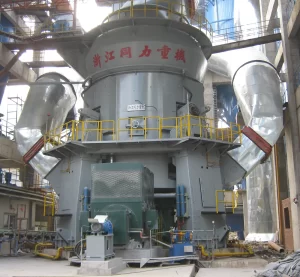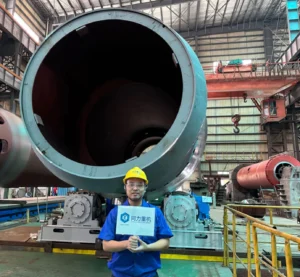
Beryl is a mineral composed of beryllium aluminum cyclosilicate with the chemical formula Be₃Al₂(Si₆O₁₄). It belongs to the group of cyclosilicate minerals, characterized by a unique ring-like arrangement of silicate tetrahedra. Beryl is renowned for its vibrant colors and diverse uses as a gemstone, with each gemstone having its own unique color name. Some of the most famous beryl varieties include emerald (green), aquamarine (blue-green), morganite (pink), and chrysoberyl (yellow). The name beryl has ancient origins, originating from the Greek word for a green gemstone. Beryl is not only a primary industrial raw material for extracting metallic beryllium, but also serves as the mineral matrix for numerous precious gemstones used in jewelry. Its greatest attraction lies in its diverse variety: common beryl, colorless or light-colored, is often overlooked due to its low economic value. However, when its crystals contain trace amounts of various color-producing elements, it can produce some of the world's most dazzling and precious gemstones, including emerald, aquamarine, chrysoberyl, and morganite. The study of beryl not only has geological and mineralogical significance, but also has important economic value to high-end manufacturing and jewelry industries.
Properties of Beryl
Chemical composition and crystal structure
Element
Beryl's basic chemical components are beryllium, aluminum, silicon, and oxygen. Its crystal structure is hexagonal, often exhibiting perfect hexagonal prisms. This structure is composed of six-membered rings of [Si₆O₁₈]¹²⁻stacked along the c-axis, connected by Al³⁺and Be²⁺ions, forming broad channels parallel to the c-axis. These channels can accommodate a variety of ions and molecules, which is the fundamental reason for beryl's rich colors. Beryl is aluminosilicate, Be₃Al₂Si₆O₁₈. BeO = 14.0%, Al₂O₃= 19.0%, and SiO₂= 67.0%. Small amounts of alkaline oxides (usually partially composed of cesium oxide) often replace beryllium oxide. Diagnostic characteristics: It is usually identified by its hexagonal crystal structure, shape, and color. It differs from apatite in its higher hardness.
Crystal structure
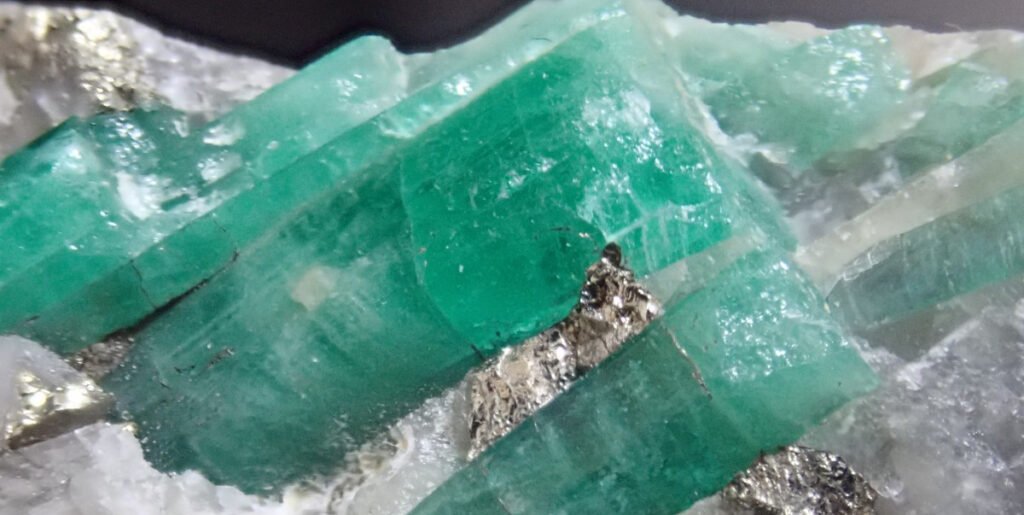
Beryl has a hexagonal crystal structure, meaning it possesses six-fold rotational symmetry about its perpendicular axis. This crystal structure forms prismatic, elongated hexagonal crystals with a well-defined basal cleavage. The fundamental building blocks of beryl's crystal structure are interconnected chains of silicate tetrahedra arranged in a ring. These chains run parallel to the crystal's c-axis and are linked together by metal cations (beryllium and aluminum) and other atoms in various coordination states. This unique arrangement gives beryl its distinctive physical and optical properties.
Physical and optical properties
| property | describe |
| origin | Around the world, including Brazil, Australia and the United States |
| Name used | Hematite, Hematite, Iron Oxide, Kidney Ore |
| Is it mineral? | Yes |
| color | Metallic gray, black, reddish brown |
| stripe | Reddish brown |
| luster | Metallic to dull colors |
| transparency | opaque |
| cleavage | No |
| toughness | crisp |
| Density (weight) | 5.26 g/cm3 |
| Diagnostic properties | Reddish-brown stripes, magnetic |
| chemical composition | Fe2O3 (iron oxide) |
| Chemical classification | oxides |
| Crystal (system) structure | trigonal system |
| Common Uses | Pigments, jewelry, heavy media separation, radiation shielding |
| occur | Found in sedimentary, metamorphic, and igneous rocks |
| Hardness (Mohs hardness) | 5.5 – 6.5 |
| Optical properties (refractive index) | N/A (opaque) |
Beryl has a range of physical properties that contribute to its value and popularity as a gemstone and industrial mineral:
1. Color: Pure beryl is colorless (called Goshenite). Its color is mainly determined by the impurity elements in the pores:
- Chromium (Cr) or Vanadium (V): Causes green color, forming emerald.
- Iron (Fe²⁺): causes the blue color of aquamarine.
- Iron (Fe³⁺): causes yellow color and forms beryl.
- Manganese (Mn): Causes pink or orange color and forms morganite.
- Cesium (Cs), lithium (Li), and manganese (Mn): work together to create the rare red beryl.
2. Hardness: Beryl has a Mohs hardness of 7.5 to 8, making it relatively durable and suitable for jewelry. However, different varieties of beryl have slightly different hardness levels.
3. Luster: After being cut and polished, beryl will have a glassy luster, giving it a gem-like appearance.
4. Transparency: Beryl is usually transparent to translucent, allowing light to pass through and reveal its internal features.
5. Refractive Index: The refractive index of beryl varies depending on the specific variety and its composition. This property affects how light bends when entering and leaving the gemstone, thus affecting the gemstone's brightness and scintillation. The refractive index is approximately 1.577-1.583, and the birefringence is relatively low (0.005-0.009).
6. Cleavage: Beryl has a distinct basal cleavage, which means it can break along a plane parallel to its basal surface.
7. Density: The density of beryl varies depending on its composition and impurities, but is generally in the range of 2.63 to 2.90 g/cm³.
8. Optical phenomena: Certain types of beryl, such as cat's eye beryl and star beryl, can exhibit optical phenomena such as cat's eye effect and starlight effect, which increases their visual appeal.
In addition to its use as a gemstone, beryl also has industrial applications due to its chemical resistance, high melting point, and electrical conductivity. It is used in a variety of fields including electronics, aerospace, and defense industries.
Types and Varieties of Beryl

Beryl is a versatile mineral that comes in several varieties, each known for its unique color and properties. Here are some of the most famous beryl varieties, organized by color:
Emerald
- Color: Emerald is known for its deep green color, which is caused by trace amounts of chromium and vanadium in the crystal structure.
- Distinctive Characteristics: Emeralds are often found in rich green and are highly prized in the gem world. They can range in color from bluish-green to yellowish-green. Inclusions are common in emeralds, which are sometimes called "jardins" (French for garden), adding to their unique allure.
Blue Crystal
- Color: Aquamarine is characterized by its pale blue to blue-green color, reminiscent of clear ocean water.
- Distinctive Characteristics: Aquamarine's pale blue or cyan hues are highly sought after. Some aquamarines may exhibit a bluish-green hue and are generally transparent. Like other beryl varieties, they may contain inclusions, but these are typically less noticeable than those in emeralds.
Morganite
- Color: Morganite is known for its pale pink to peach color, which is due to trace amounts of manganese.
- Why It's Unique: Morganite's soft hues make it a popular choice for jewelry. Colors range from pale pink to deep peach. Morganite is prized for its clarity and transparency, and is often cut into elegant, stylish faceted shapes.
Chrysoberyl
- Color: Chrysoberyl ranges in color from yellow to yellow-green.
- Unique Characteristics: The word "chrysoberyl" (heliodor) comes from Greek, meaning "sun" and "gift," symbolizing its sunlight-like color. This gemstone's color ranges from pale yellow to a vibrant yellow-green. Its vibrant color and relatively good clarity make it a striking choice for jewelry.
Goshen Stone
- Color: Beryl is a colorless beryl often used as a base for various treatments and as a substitute for diamond.
- Unique Characteristics: Because it is colorless, beryl is able to display brilliant sparkle thanks to its natural transparency. It is sometimes used as an inexpensive alternative to diamonds and as a neutral backdrop for other colored gemstones.
Red Beryl (Red Beryl)
- Color: Red beryl is one of the rarest and most valuable varieties of beryl, and its vibrant red color is due to trace amounts of manganese.
- Unique Characteristics: Red beryl's rich color and rarity make it highly sought after by collectors and gem enthusiasts. It is considered one of the rarest gemstones in the world.
These are just a few of the many varieties of beryl that exist, each prized for its unique color and qualities. This diversity of beryl’s colors and properties has contributed to its enduring popularity in both gemology and the jewelry industry.
Beryl Properties and Uses
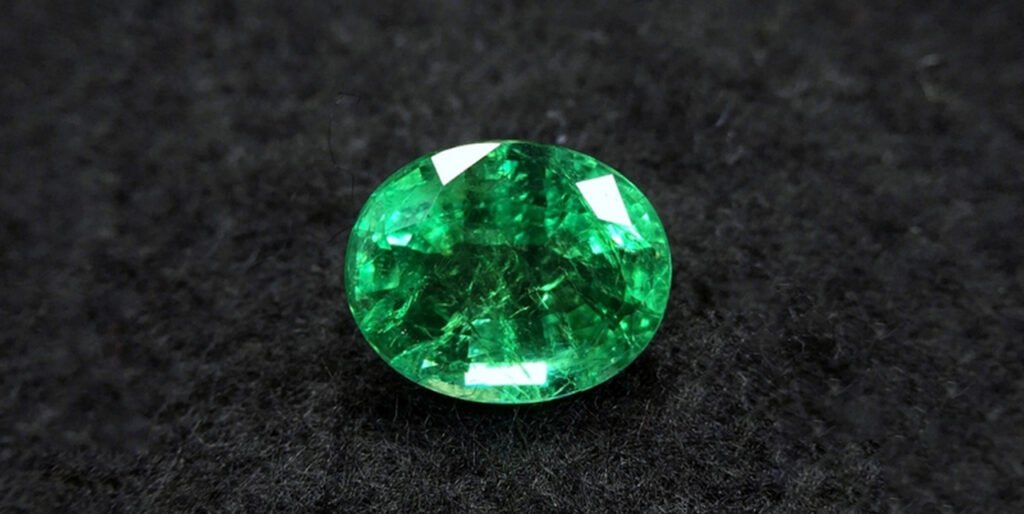
Beryl, as a precious gemstone, has a long history and held significant cultural significance across civilizations. In ancient times, beryl was considered a symbol of purity and protection. The rich green emerald, especially, was revered by the Egyptians for its vibrant color, often associated with fertility and rebirth. The ancient Greeks also highly valued emeralds, believing them to offer foresight and enhance the ability to predict the future.
Factors that affect the value of beryl gemstone
Several factors determine beryl's value as a gemstone:
- Color: A beryl's color significantly impacts its value. Beryls with the brightest, most saturated colors are often the most prized. For example, the deep, rich green of emerald and the clear, azure blue of aquamarine are both highly sought after.
- Clarity: Clarity refers to the presence of internal inclusions or external blemishes in a gemstone. Beryl gemstones with fewer inclusions are considered more valuable. However, some inclusions, such as those in emeralds, can be considered part of the gemstone's character if they do not significantly affect its clarity.
- Size: Larger beryl gemstones are rarer and more expensive, especially those with excellent color and clarity. The scarcity of large, top-quality beryl gemstones also increases their value.
- Cut: The way a beryl is cut and faceted has a significant impact on its appearance and value. A well-crafted cut enhances a gemstone's brilliance, scintillation, and color. The cut should also complement the gemstone's color and optical properties.
Common uses in jewelry and decorative items
Beryl comes in many colorful forms and is highly prized in jewelry and decorative design:
- Rings: Beryl is often set in the center of rings, especially engagement rings and cocktail rings. Beryl's durability and rich color make it a versatile choice.
- Necklaces and Pendants: Beryl adds a touch of color and elegance to necklaces and pendants. Emerald and aquamarine are often used as accessories in necklaces and pendants due to their popular and timeless appeal.
- Earrings: Beryl can be worn in earrings as studs, pendants, or in chandelier designs. Beryl’s transparency and brilliance make it an excellent choice for enhancing facial features.
- Bracelets and Brooches: Beryl gemstones can also be found on bracelets and brooches, adding a touch of sophistication and color to both formal and casual outfits.
- Decorations: In addition to jewelry, beryl is also used to make carvings, sculptures, and ornaments. These works show the charm of gemstones and are highly collectible.
Industrial applications of beryl
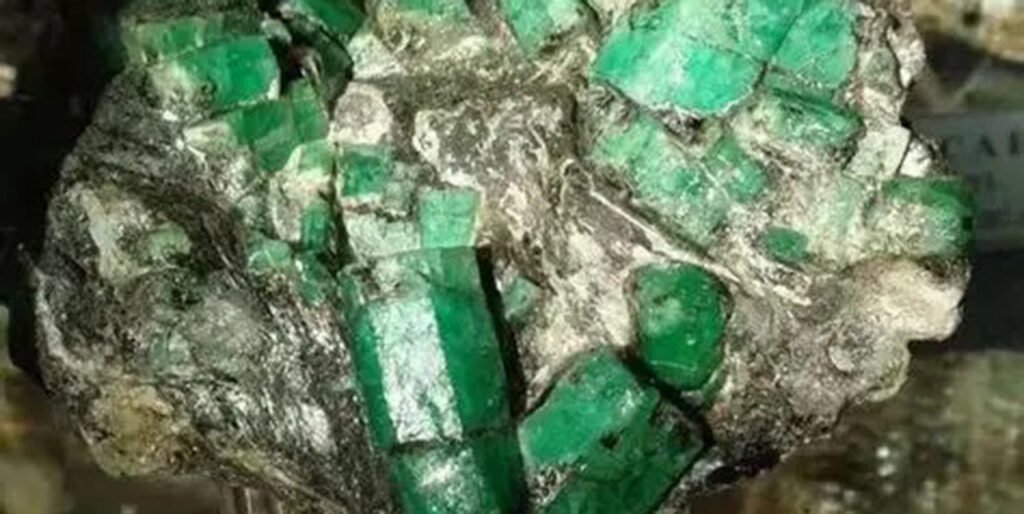
Source of Beryllium Metal: Beryl is the main ore of beryllium. Beryllium is a strategic metal. Due to its excellent properties such as low density (lighter than aluminum), high melting point, extremely high rigidity (harder than titanium), good thermal stability and high X-ray transmittance, it is widely used in:
- Electronics and Telecommunications: Beryl’s excellent thermal conductivity, low dielectric constant, and stability at high frequencies make it well-suited for electronics and telecommunications applications. It can be used in microwave components, transistors, and integrated circuits.
- Aerospace and Defense: Beryl’s combination of lightness and high strength makes it ideal for aerospace and defense applications. It can be used to create lightweight structural components, such as satellite mirrors and military aircraft parts.
- Nuclear Industry: Beryl is used in some nuclear reactor designs due to its low absorption cross-section for thermal neutrons. This property makes it very useful in nuclear power generation and research reactors.
- Medical Industry: Beryllium is used in the medical industry for X-ray windows and various medical imaging devices due to its transparency to X-rays and gamma rays.
- Automotive and Transportation: Beryl’s strength-to-weight ratio offers advantages in applications where lightweighting is crucial. It can be used to create lightweight components for vehicles and transportation systems.
Extracting beryllium from beryl

Beryllium is a valuable element in industrial applications due to its desirable properties, including low density, high melting point, excellent thermal conductivity, and superior strength-to-weight ratio. Beryllium is often used as an alloying element to improve the properties of other metals.
Extracting beryllium from beryl involves several steps:
- Mining and beneficiation: Usually comes from pegmatite mines. Beryl is separated from gangue minerals such as feldspar and quartz through crushing, grinding and flotation to obtain high-grade beryl concentrate.
- Concentration: After ball mill milling or vertical roller mill milling, the ore is concentrated, typically using physical separation techniques such as gravity separation or flotation. This step is crucial for increasing the beryllium content of the ore.
- Chemical treatment: The concentrate undergoes chemical treatment to extract beryllium compounds. A common method is alkaline dissolution, where the ore is treated with sodium hydroxide to form soluble beryllium hydroxide. Other methods include sulfuric acid treatment and fluoridation.
- Sulfuric acid method: The concentrate is calcined, ground, and mixed with concentrated sulfuric acid, which is then calcined again to produce soluble beryllium sulfate. Subsequently, high-purity beryllium hydroxide or beryllium oxide is obtained through leaching, precipitation, calcination and other steps.
- Fluoridation method: beryl is melted with fluxes such as sodium fluorosilicate and soda to produce sodium fluoroberyllate, which is then hydrolyzed to obtain beryllium hydroxide.
- Purification and Conversion: The beryllium hydroxide solution is purified to remove impurities and then converted into beryllium fluoride through a chemical reaction.
- Electrolysis: Beryllium fluoride is electrolyzed to deposit beryllium metal at the cathode. This process can extract pure beryllium.
- Alloy Production: Beryllium is often combined with other metals, such as copper, to form beryllium copper alloys. These alloys have excellent electrical and thermal conductivity, making them highly valuable in a variety of industries.
It should be noted that due to the toxicity of beryllium compounds, the extraction and processing of beryllium needs to be handled with caution and environmental considerations.
Beryl Formation and Geological Conditions
Beryl forms in pegmatites and hydrothermal veins, specific geological environments that provide the necessary conditions for its crystallization. Pegmatites are coarse-grained igneous rocks with unusually large crystals, while hydrothermal veins are deposits formed by high-temperature, mineral-rich fluids flowing through cracks in the Earth's crust. Beryl formation requires specific elements, temperatures, and pressures:
- Element sources: Beryl is mainly composed of beryllium, aluminum and silicon. These elements need to be present in sufficient quantities in the geological environment.
- High-pressure conditions: Beryl formation occurs at relatively high pressures within the Earth's crust. This typically occurs deep within the crust, where hydrothermal fluids interact with existing minerals.
- Hydrothermal fluids: In hydrothermal systems, hot, mineral-rich fluids migrate through fractures in rocks. These fluids are often rich in beryllium, aluminum, and silicon, which provide the elements necessary for beryl formation.
- Temperature gradient: The temperature gradient between hydrothermal fluids and the surrounding rocks allows minerals such as beryl to precipitate and crystallize.
- Time: Beryl formation is a slow process that takes a long time as hydrothermal fluids interact with the surrounding rocks and minerals.
Common Origins of Beryl

Beryl is found throughout the world, often associated with granite pegmatites and hydrothermal deposits. Some well-known beryl locations and occurrences include:
- Emerald deposits: Colombia, Zambia, Brazil, and Afghanistan are all rich in high-quality emeralds. Colombia is particularly famous for its emeralds.
- Aquamarine Deposits: Aquamarine can be found in Brazil, Madagascar, Nigeria, and the United States (such as Colorado and California).
- Morganite Deposits: Morganite is commonly found in Brazil, Madagascar, Afghanistan, and parts of the United States.
- Chrysoberyl Deposits: Chrysoberyl is found in Brazil, Russia, Namibia and parts of North America.
- Beryl Deposits: Beryl is a colorless green stone that is found in various locations, often with other beryl varieties.
- Red Beryl (Red Beryl) Deposits: Red Beryl is one of the rarest varieties of beryl and is found primarily in the Wawa Mountains of Utah, USA.
- Other Varieties: Other varieties of beryl, such as yellow beryl and yellow-green beryl, can also be found throughout the world.
- These deposits are often associated with specific geological formations and mineral-rich environments that favor the formation of beryl crystals. Exploration and mining activities are also carried out in these areas due to the demand for beryl as a gemstone and for industrial uses.
Beryl synthetic products and treatment methods
Synthetic beryl: Difference from natural beryl
Synthetic beryl, also known as laboratory-grown beryl or artificial beryl, is produced in a controlled laboratory environment through various methods, including hydrothermal synthesis and flux methods. These synthetic crystals have the same chemical composition and crystal structure as natural beryl, but there are some key differences between synthetic beryl and natural beryl:
- Origin: Synthetic beryl is created in a laboratory, while natural beryl is formed over millions of years through geological processes in the Earth's crust.
- Inclusions: Natural beryl often contains inclusions, which are mineral or fluid inclusions that became trapped during its formation. In contrast, synthetic beryl, due to its controlled growth conditions, typically has fewer inclusions.
- Color: Some synthetic beryls are too perfect or uniform in color, lacking the natural variations and nuances seen in many natural beryl specimens.
- Growth Pattern: Natural beryl may exhibit growth patterns and characteristics specific to its geological origin. Synthetic beryl may lack these natural growth characteristics.
- Price: Due to rarity and differences in origin, synthetic beryl is generally less expensive than natural beryl, especially high-quality specimens.
Common treatments and enhancement methods
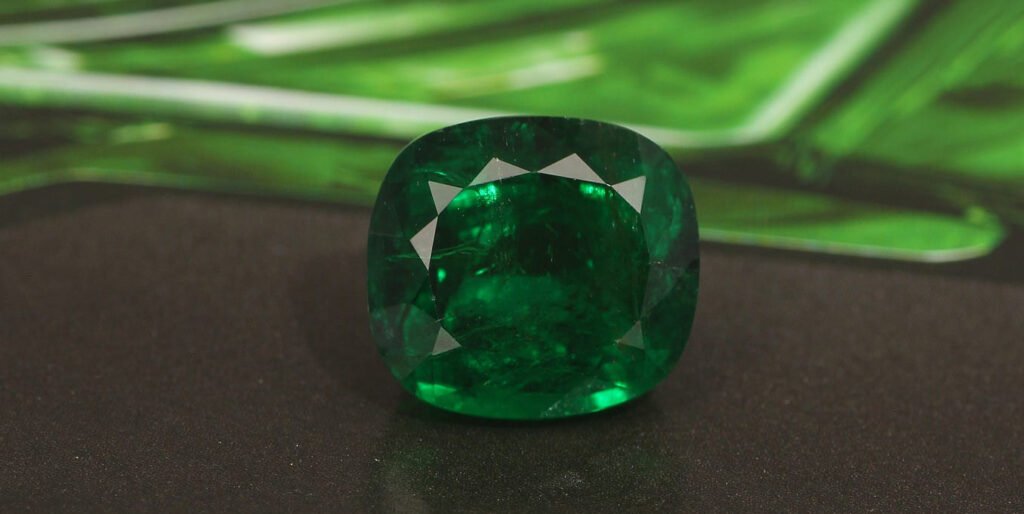
Gemstones, including beryl, are often treated and enhanced to improve their appearance or increase their marketability. Some common treatments and enhancements used on beryl and other gemstones include:
- Heat treatment: Heat treatment is a common method used to enhance the color of beryl. For example, heating can lighten the color of blue aquamarine or brighten the color of yellow beryl.
- Irradiation: Irradiation can be used to alter the color of some beryl varieties. For example, yellow beryl can be irradiated to produce an emerald-like green hue.
- Oil- or resin-impregnated emeralds are sometimes filled with oil or resin to improve clarity and color. This practice has been used for centuries to enhance the appearance of emeralds.
- Surface Coatings: Beryl gemstones can be coated with a coating or film to temporarily improve their color. However, such coatings are generally not durable and can be easily damaged.
- Clarity Enhancement: Some treatments involve filling surface-reaching fractures or cavities with optically transparent material to improve the clarity and appearance of the gemstone.
It's important to disclose treatments and enhancements when selling gemstones, as they can significantly affect a gemstone's value, durability, and long-term appearance. The gem industry adheres to ethical practices and fully discloses any treatments or enhancements used on gemstones.
Beryl distribution area
Beryl is found throughout the world, often in specific geological environments that provide the necessary conditions for its formation. Here are some common sources of beryl:
- Colombia: Colombia is renowned for producing the finest emeralds in the world. The Muzo and Chivor mines are particularly renowned for their vibrant green emeralds.
- Brazil: Brazil is a major source of various beryl varieties, including emerald, aquamarine, morganite, and chrysoberyl. The Minas Gerais region is renowned for its high-quality beryl.
- Zambia: Zambia is famous for its vibrant green emeralds, often characterized by a distinctive blue undertone. The Kagemu mine is a significant source of these emeralds.
- Madagascar: Madagascar produces a wide variety of beryl, including aquamarine, morganite, and chrysoberyl. The island is renowned for its rich gemstone deposits.
- Nigeria: Nigeria is a significant producer of aquamarine, with deposits found throughout the country.
- Afghanistan: Afghanistan is known for its high-quality emeralds and morganite. The Panjshir Valley is a famous emerald source.
- Russia: Russia's Ural Mountains have been a source of beryl gemstones since ancient times, including aquamarine and chrysoberyl.
- United States: Beryl deposits can be found in every state in the United States. Utah's Wawa Mountains are famous for producing rare red beryl, while states like North Carolina, Colorado, and California produce aquamarine and other varieties of beryl.
- Namibia: Namibia is known for producing high-quality aquamarine and chrysoberyl, which are often found in pegmatites.
- Pakistan: Pakistan is another source of high-quality emeralds, commonly found in the Swat Valley region.
- Mozambique: Mozambique has become a significant producer of various colored gemstones, including aquamarine and tourmaline .
- Tanzania: Tanzania is famous for its aquamarines and other colored gemstones, including tanzanite .
Conclusion
Beryl, a minor ore of beryllium, is one of the most important gem minerals. Processing methods vary depending on the mineral's properties and intended use . Beryl is a mineral with unique properties and incredibly diverse applications. From its crystallization from pegmatites deep within the Earth's crust, its fate is shaped by its intrinsic chemical composition and external processing techniques. As an industrial beryllium ore, it is indispensable in the aerospace and nuclear power industries. As a gemstone matrix, meticulously crafted by skilled artisans, it is transformed into a treasure that dominates the art of color, carrying humanity's pursuit of beauty and eternity. The ongoing exploration of beryl not only deepens our understanding of the world of minerals but also connects natural science, materials engineering, and the humanities and arts, highlighting its irreplaceable scientific and economic value. Ok so this article ends here if you want to know about our other product like a rotary incineration rotary kiln for efficient mineral recovery please click here.

